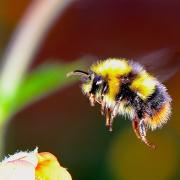A family of black mustelids were been spotted walking down a street in Horsham recently.
Shoppers expressed their alarm when the black mustelids emerged from a drain and began walking down North Street, Horsham.
The sighting sparked confusion as residents were unsure whether they were pet black ferrets or a family of wild mink, both from the mammal group called mustelids.
Shoppers have expressed their alarm at seeing a family of black mustelids emerge from a drain and walk down the high street in #Horsham.https://t.co/ngvURLfq71
— Brighton Argus (@brightonargus) July 10, 2023
What are mustelids and where can they be found in the UK?
According to Encyclopedia Britannia mustelids are mammals and describe them as "fur-bearing carnivores that inhabit terrestrial and aquatic regions throughout the world".
There are said to be around 55 different species of mustelids.
These include everything from ferrets, polecats and badgers to otters, the wolverine, and other members of the weasel family.
There are just eight species of mustelids found in the UK and this is where to find them.
Badger
The Wildlife Trusts describes badgers as "Britain’s most unmistakable mustelid".
Describing where they can be found, the Wildlife Trusts said: "There is a good chance of spotting one by scanning along woodland edges at dusk if there is a sett nearby.
"Roadside verges also make useful foraging grounds, so drive slowly and keep an eye out for them when driving at night."
READ MORE: Why the badger cull continues to create controversy

Weasel
The smallest of the mustelids, The National Trusts said they are commonly found "unexpectedly" when they pop up out of long grass or hedgerows.
READ MORE: The secret world of a weasel
Stoat
Stoats are similar to weasels but larger and have a loner tail.
The Wildlife Trusts said: "They inhabit a wide range of habitats, from woodland to moorland, or even hedgerows.
"But, like weasels, stoats love areas with old dry-stone walls and mounds of rocks, which provide good cover for them and the prey they need to hunt to survive."
Polecat
Polecats were eradicated from large areas of the UK, according to The Wildlife Trusts, because they gained a reputation for being "vermin" due to their habit of raiding chicken pens and pheasant farms.
But the population is on the increase.
The Trusts added: "Polecats have spread east from their strongholds in Wales and can be spotted on moors, farmland and even bogs.
"Occasionally, they will show up in suburban gardens too, particularly where there are good populations of small rodents."
Pine Marten
The Pine Martin is considered a "tree-climbing master", according to The Wildlifes Trust and like other mustelids, was once persecuted to the point of extinction in England and Wales.
The Trusts added: "A population held on in the Caledonian forests of central Scotland and has slowly spread to other parts of the country.
"Pine martens have been the subject of translocation projects, with small numbers officially being released in west Wales and the Forest of Dean, but other small populations have also been discovered in other parts of England, including Hampshire and Shropshire."
READ MORE: Pine martens: the species that is returning to the Forest of Dean
Otter

Otters are present in all counties across the UK according to The Wildlife Trusts.
They have made a comeback in recent years after facing extinction across the UK in the 1970s.
READ MORE: Otters: Back from the brink in Somerset
Domestic Ferret
The Wildlife Trusts says domestic ferrets were bred from wild polecats to be used for hunting rabbits.
It added: "They also became increasingly popular pets.
"Many escapees spread across the English countryside over the latter half of the 20th century, and it was thought that most reported polecat sightings were actually feral ferrets.
"The ferrets have now been displaced by the slightly bulkier and darker wild polecat in most western parts of England."
READ MORE: The quirky world of Yorkshire ferret racing
American Mink
Described by the Trusts as an "invasive mustelid" it can be found on rivers across much of the UK after many escaped, or were released, from fur farms in the 1960s and 1970s.
READ MORE: What impact do non native species have on local wildlife?



























